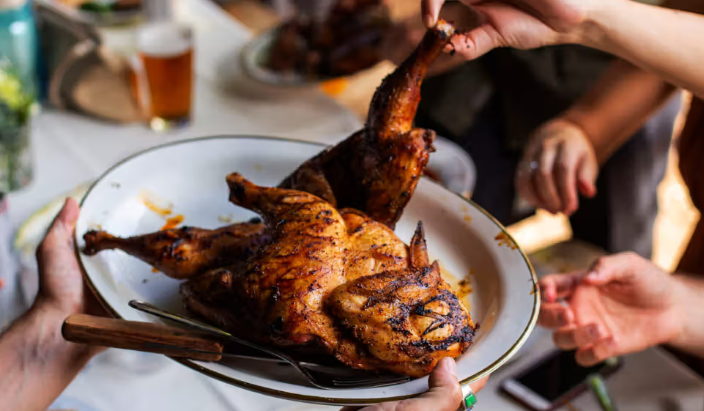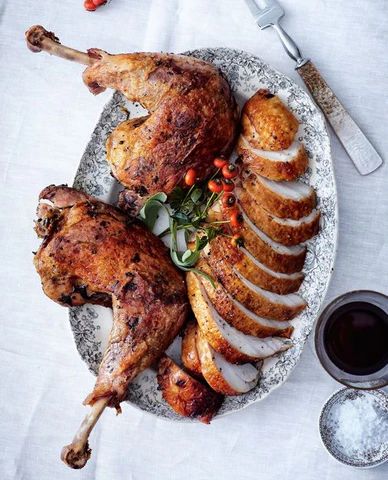
What Does “High in Protein” Mean?
A food is considered “high in protein” if a substantial portion of its calories come from protein, or if a reasonably sized serving provides a meaningful amount of protein relative to daily needs.
-
The Recommended Dietary Allowance (RDA) for protein is about 0.8 grams per kilogram of body weight (≈ 0.36 g per pound) for a healthy adult.
-
However, many people aiming for fitness, muscle gain, or weight management often consume 1.2‑2.0 g/kg (or more), depending on activity.
-
Foods like lean meats, eggs, dairy, legumes, and soy products are often among the richest sources.
In practice, a “high protein food” often supplies > 15–20 g protein per 100 g (or equivalent serving) or contributes meaningfully toward your daily intake.
Why Are Foods High in Protein So Beneficial for Health?
High‑protein foods offer many advantages when consumed as part of a balanced diet. Here are key benefits:
1. Muscle Growth, Repair & Maintenance
Protein provides amino acids, the building blocks that repair and build muscle tissue, especially after exercise. This is vital for strength, recovery, and preventing muscle loss (sarcopenia) with aging.
2. Increased Metabolism & Higher Calorie Burn
Protein has the highest thermic effect of food (TEF) among macronutrients: digesting and metabolizing protein uses more energy (20–30% of its calories) compared to carbs or fats.
Thus, high-protein diets can boost your basal metabolic rate (BMR), helping burn more calories even at rest.
3. Enhanced Satiety / Hunger Control
Protein is more filling than carbohydrates or fat. It triggers satiety hormones and helps curb cravings, reducing overall calorie intake.
4. Supports Weight Loss & Fat Loss
Because of the combined effects of increased satiety, metabolic boost, and preservation of muscle mass, high-protein diets have been shown to support fat loss more effectively than lower-protein diets (for the same calorie intake).
5. Bone Health & Tissue Integrity
Contrary to some older fears, adequate or higher protein intake supports bone strength by improving calcium absorption and helping preserve muscle and tissue integrity.
6. Immune Function & Enzyme / Hormone Synthesis
Proteins are necessary for the creation of enzymes, hormones, antibodies, and many cellular structures. Without sufficient protein, the body’s repair, immunity, and regulatory systems can be impaired.
7. Blood Pressure & Cardiovascular Benefits
Some studies suggest that substituting plant or lean animal proteins for saturated fats or red meats can help lower blood pressure and improve heart health.

Top Foods High in Protein (Beyond Chicken)
Here’s a categorized list of excellent protein sources you can include in your diet:
🐓 Animal & Seafood Sources
-
Chicken breast (lean, skinless): A benchmark lean protein. ~25–30 g protein per 100 g cooked.
-
Fish & Seafood: Salmon, tuna, cod, shrimp, etc., also deliver healthy fats (especially omega‑3s). Lean Beef / Pork (lean cuts): Provide high-quality protein plus iron, zinc, B‑vitamins.
-
Eggs: Complete protein (all essential amino acids). ~6 g per large egg.
-
Dairy / Greek Yogurt / Cottage Cheese: High-protein dairy options, also offering calcium and probiotics.
🌱 Plant-Based / Vegetarian Sources
-
Legumes & Pulses: Lentils, chickpeas, black beans, etc. For example, cooked lentils have ~9 g protein per 100 g.
-
Soy & Soy Products (Tofu, Tempeh, Edamame): These are among the richest plant proteins, often considered “complete” proteins.
-
Quinoa: A grain-like seed that provides all essential amino acids. ~8 g protein per cooked cup.
-
Nuts & Seeds: Almonds, pumpkin seeds, chia, flax, hemp etc. They add protein plus healthy fats, fiber, and minerals. (But be mindful of calorie density.)
How to Use & Combine High‑Protein Foods (Meal Ideas)
Here are practical ways to incorporate high-protein foods:
-
Balance with other macronutrients: Pair protein with vegetables, healthy fats, and whole grains.
-
Combine plant proteins: For vegetarians, mixing legumes + grains (e.g. beans + rice) helps complete the amino acid profile.
-
Use lean cuts & healthier preparation methods: Bake, grill, steam, broil instead of deep frying.
-
Include protein at every meal / snack: E.g., Greek yogurt in breakfast, lentil curry at lunch, tofu stir-fry at dinner.
-
Portion wisely: Aiming for ~20–30 g protein per main meal is a good benchmark for many.
-
Pre- or post-workout protein: Consuming a protein source after strength training supports muscle repair.
-
Add protein to recipes: Add beans to soups, nuts/seeds to salads, tofu to stews, egg in fried rice, etc.
SEO Structure & Keywords Within the Article
To improve SEO and indexing, ensure:
-
The primary keyword (“foods high in protein”) appears in the title, first paragraph, at least one subheading, and a few times scattered in the article (but naturally).
-
Use related keywords: “high protein food sources,” “benefits of high protein diet,” “lean protein sources,” “plant protein vs animal protein.”
-
Use internal headings (H2, H3) with keyword inclusion (e.g. “Top Foods High in Protein,” “Benefits of a High-Protein Diet”).
-
Include a meta description (≈ 140–160 characters) with the keyword:
Meta description example:
“Explore the best foods high in protein—from lean meats to plant proteins—plus benefits, meal ideas, and tips for a strong, healthy body.” -
Use alt text for images (if you add photos) with descriptive, keyword-rich captions (e.g. “bowl of quinoa and beans – high protein food”).
-
Use internal and external links (e.g. to credible health sites or your own related articles).
-
Use short paragraphs, bullet points, and readability for both users and search engines.
Precautions & Considerations
While high-protein foods are beneficial, there are some caveats:
-
Kidney Health: In healthy individuals, high protein intake is usually safe. But those with existing kidney disease should monitor protein intake as advised by a doctor.
-
Balance Fat & Saturated Fat: Some protein sources (e.g. fatty beef, full-fat dairy) carry significant saturated fat; choose lean cuts or low-fat versions.
Overemphasis on Animal Protein: Too much red/processed meat is associated with risks (heart disease, colorectal cancer). Replacing some with plant proteins is wise. -
Digestive Issues: Sudden increases in protein (especially from legumes, beans) may cause gas or bloating — increase gradually, soak beans, use digestive aids.
-
Calorie Surplus: Protein foods can also bring calories; if weight maintenance is the goal, don’t overconsume.
-
Allergies / Sensitivities: Some may be allergic to dairy, eggs, soy, nuts — choose alternate protein sources accordingly.
Sample Title & Meta Info
Title:
“Top Foods High in Protein: Beyond Chicken for Muscle, Health & Weight Management”
Meta Description (≈150 chars):
“Learn about top foods high in protein—meat, seafood, legumes & plant sources—with benefits, recipes, and practical tips for a healthier life.”
Conclusion
While chicken is a well-known and effective lean protein source, a wide diversity of foods high in protein is available—from fish, eggs, dairy, to legumes, soy, nuts, and seeds. Together they offer essential amino acids, support muscle growth, boost metabolism, aid weight loss, strengthen immunity, and more.
The key is balance—select lean, nutrient-dense protein sources, complement them with vegetables, whole grains, and good fats, and tailor portions to your goals (muscle gain, weight loss, maintenance).

You must be logged in to post a comment.